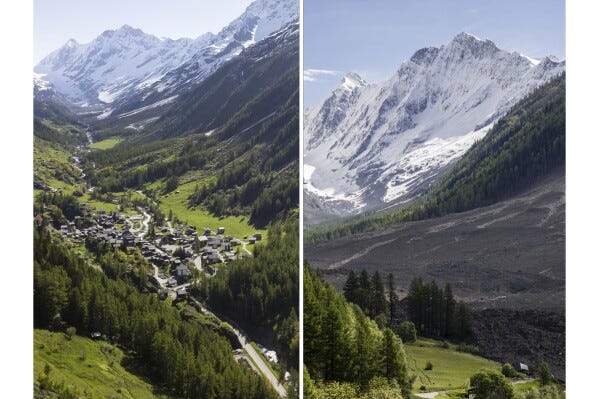I feel deeply affected by the news of the Swiss glacier collapse and the evisceration of the small village of Blatten.

Like many American college students, I studied abroad my junior year of college. While I was in Florence, I traveled to Interlaken, once with friends, and another time solo because I loved it so much - the crisp trees, healthy cows, the clanging of bells, fresh air. Interlaken, for those of you who perhaps drank too much in a hostel there, is a mere 45 miles from Blatten.
The climate crisis is often visually represented by rising seas surging across coastal communities and glaciers melting in remote parts of the world. Here we see a healthy Swiss village - one we might presume might fare well in a hotter world - completely crushed by an unstable glacier. (Swiss glaciers lost half of their volume between 1931 and 2016; the glacier collapse is absolutely related to our warming planet).
A particularly potent feeling for me - and perhaps you, too - in 2025: the magnitude of suffering we visually consume on a daily basis alongside the knowledge that we live under a government not ignoring - but actively working against climate science - stripping grants, blocking green energy, removing critical environmental protections, damaging universities, and promoting an anti-science mindset.
One of the grave and beautiful things fiction can do is conjure emotional truth - stitch the human experience into disaster in a way that makes people feel and understand what’s coming more deeply.
Keep reading with a 7-day free trial
Subscribe to Open Field Stories to keep reading this post and get 7 days of free access to the full post archives.

